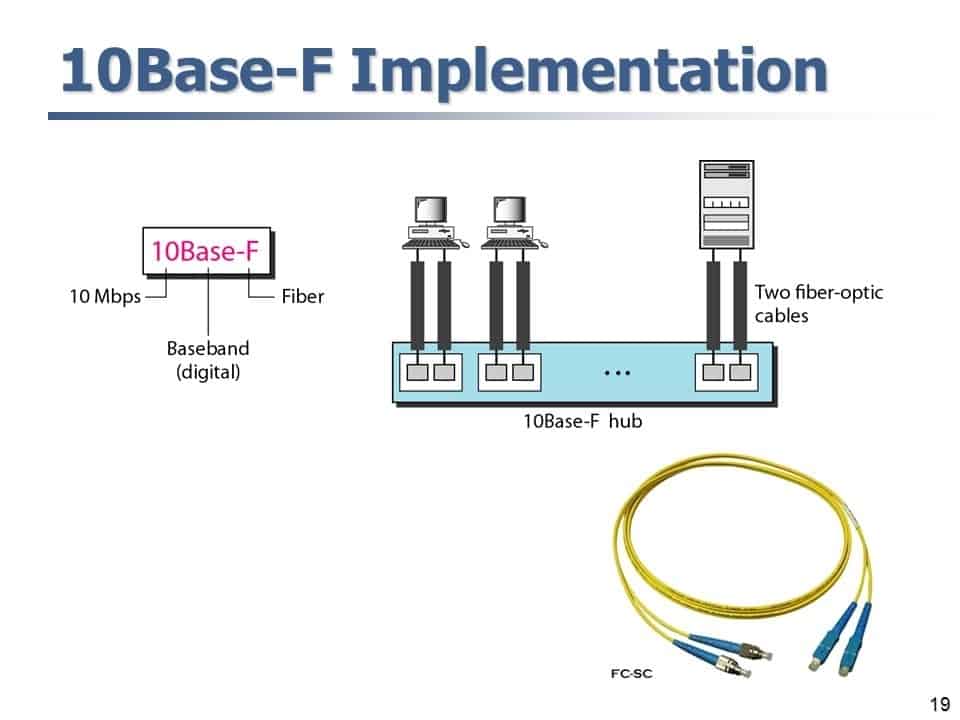Definition of 10BaseF in The Network Encyclopedia.
What is 10BaseF?
10Base-F is a type of standard for implementing Ethernet networks. 10BaseF is different from other 10-Mbps Ethernet technologies because it uses fiber-optic cabling instead of copper unshielded twisted-pair (UTP) cabling. 10BaseF is based on the 802.3 specifications of Project 802 developed by the Institute of Electrical and Electronic Engineers (IEEE).
How 10BaseF work?
10BaseF is similar to 10BaseT in that each station is wired into a fiber-optic hub in a star topology to form the network. The maximum length of any segment of 10BaseF fiber-optic cabling is 2 kilometers. The recommended cabling type for 10BaseF networks is 62.5-micron diameter fiber-optic cabling. This cable can be terminated with either ST connectors or SMA connectors, depending on the vendor and the hub configuration. Two-strand multimode fiber-optic cabling is used, with one strand allotted for transmitting data and the other for receiving data.
The 10BaseF standard actually consists of three separate standards describing different media specifications:
- 10BaseFB: Defines how the synchronous data transmission occurs over the fiber-optic cabling. Using 10BaseFB segments, you can cascade or link synchronous fiber-optic hubs in configurations that are longer than traditional 10BaseT Ethernet networks and contain up to 1024 stations. This standard is more expensive and is not as widely implemented as 10BaseFL.
- 10BaseFL: Defines the characteristics of the fiber-optic link between the nodes and the hub or concentrator. 10BaseFL replaces the older standard for fiber-optic link segments, Fiber-Optic Inter-Repeater Link (FOIRL) segments, which was developed in the 1980s. 10BaseFL is the most commonly implemented version of 10BaseF.
- 10BaseFP: Defines the implementation of a star topology that does not use repeaters. 10BaseFP stands for Fiber Passive, and its segments can be only 500 meters in length with a maximum of 33 stations connected. This standard is rarely used today.

TIP
Use 10BaseF instead of 10BaseT in environments that are electrically noisy, such as in industrial areas, near elevator shafts, or around other motors or generators.
Use fiber-optic cabling when running cables between buildings. Differences in ground potential between the ends of copper cabling can induce voltages that can damage networking equipment if the ends are not grounded properly. Fiber-optic cabling also supports faster speeds than copper UTP cabling and provides a more suitable upgrade option to Fast Ethernet and beyond.
The maximum signal loss or attenuation on a given segment should be no more than 12.5 decibels. Using too many connectors in a segment of fiber-optic cabling can cause the attenuation to exceed this figure, which can lead to signal loss.